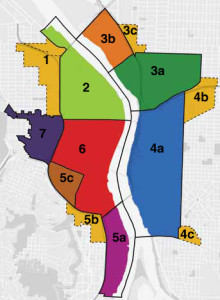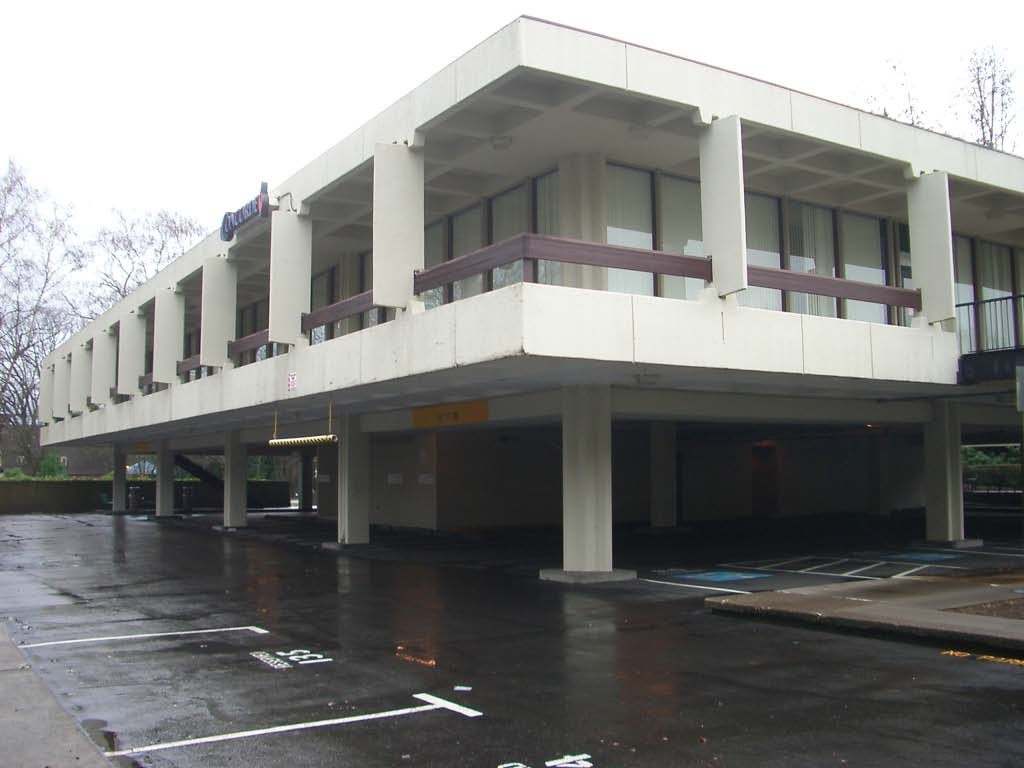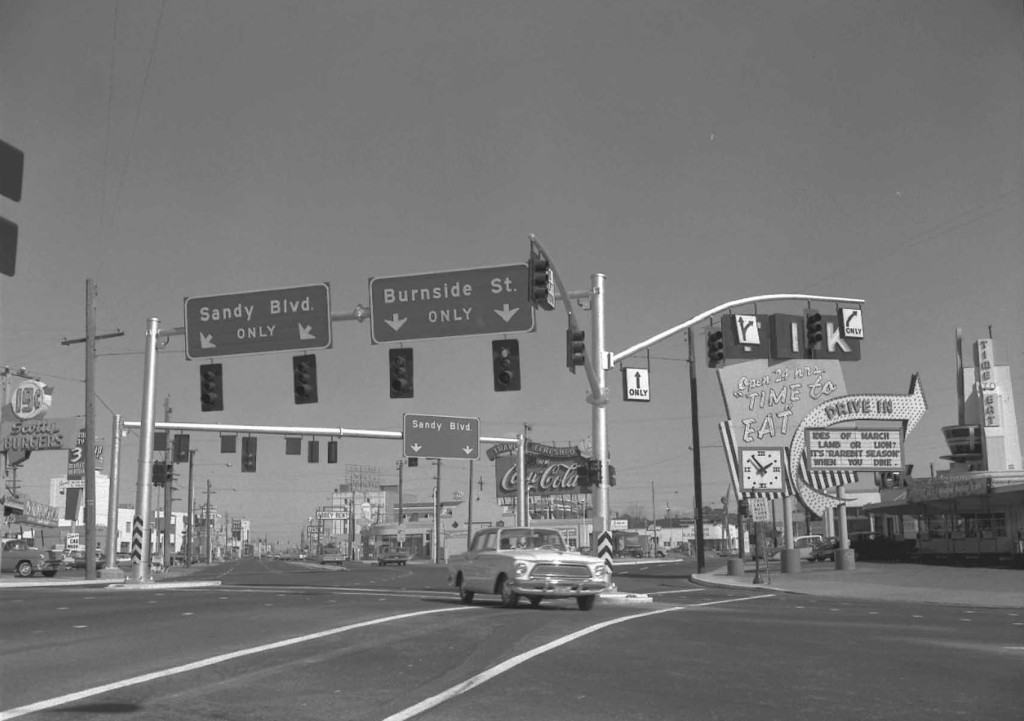“Modern” is not traditionally part of a historic preservationist’s vocabulary, but as time rolls on, modern resources have become notable for their architectural significance, construction technologies, and association with significant social patterns that define national, state, and local history.
During Summer 2011, Peter Meijer Architect, PC (PMA) performed a reconnaissance level survey of modern historic resources in Portland’s Central City. The work was completed for the City of Portland Bureau of Planning and Sustainability to dovetail with the Bureau’s Central City 2035 Plan. For this survey the modern period is defined as 1945-1985, beginning with Post-World War II development and ending when all Modern era properties will be at least fifty-years in age when the Central City plan is fully realized in 2035.
 Many of Portland’s iconic landmark buildings are modern era resources, such as the Veterans Memorial Coliseum, Lloyd Center Mall, U.S. Bancorp tower, and the Portland Building. The survey intentionally excludes these well-known properties in order to highlight broader architectural patterns and identify some of the less prominent buildings that may be considered historically significant in the future.
Many of Portland’s iconic landmark buildings are modern era resources, such as the Veterans Memorial Coliseum, Lloyd Center Mall, U.S. Bancorp tower, and the Portland Building. The survey intentionally excludes these well-known properties in order to highlight broader architectural patterns and identify some of the less prominent buildings that may be considered historically significant in the future.
 Of approximately 976 modern period resources within the Central City’s seven geographic clusters, PMA selected 152 properties for reconnaissance level survey. Representation of geographic clusters, resource typologies, and potential eligibility were considered when selecting properties to survey. In a selective survey, most properties should be considered potentially eligible for historic designation. Online maps, tax assessor information, and Google Earth were used to inform the selection process. Fieldwork involved taking photographs of each property, recording the resource type, cladding materials, style, height, plan type, and auxiliary resources, and then making a preliminary determination of National Register eligibility based on age, integrity, and historic character-defining features. A final report outlines the project and findings, and survey data was added to the Oregon Historic Sites database.
Of approximately 976 modern period resources within the Central City’s seven geographic clusters, PMA selected 152 properties for reconnaissance level survey. Representation of geographic clusters, resource typologies, and potential eligibility were considered when selecting properties to survey. In a selective survey, most properties should be considered potentially eligible for historic designation. Online maps, tax assessor information, and Google Earth were used to inform the selection process. Fieldwork involved taking photographs of each property, recording the resource type, cladding materials, style, height, plan type, and auxiliary resources, and then making a preliminary determination of National Register eligibility based on age, integrity, and historic character-defining features. A final report outlines the project and findings, and survey data was added to the Oregon Historic Sites database.

Historic photo of East Burnside & Sandy Drive-In
Mod-toids: Some interesting modern survey findings:
• Glass and metal curtain wall, roman brick, and various treatments of concrete (block, poured, panels are the most common exterior materials found on Modern Period buildings.
• No single-family residential units were constructed in the Central City during the modern period.
• Small industrial buildings, including warehouses and service bay resources, are found in every cluster of the Central City. These building types have highly adaptable plan types and their size, character, and location make them ripe opportunities for redevelopment as industrial needs change.
• Modern period transportation developments, such as freeways and bridges, have greatly impacted the Central City urban landscape. Many of the Central City clusters are geographically defined by transportation developments. Larger modern resource types tend to be more concentrated near freeways and freeway entrances.
Written by PMA preservation staff.
